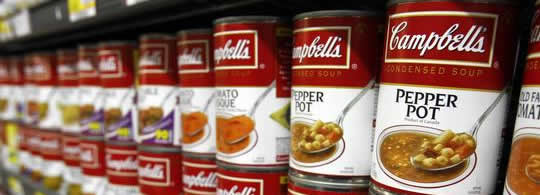Your Brain on Soup
Soup is a product you probably don’t lust for. Sure, a hot bowl of soup is nice after a chilly job of shoveling snow out of the driveway, but rarely is it more than an afterthought, or a quick prelude to a more interesting main course. If you are Campbell Soup Co., though, you DO spend a lot of time thinking about soup. And, as detailed by the Wall Street Journal, they want to understand YOUR hidden feelings about soup to improve their packaging:
Campbell’s marketers were stymied by several problems. First, consumers just didn’t think much about soup, making meaningful market research difficult. Furthermore, they found that traditional market research techniques like asking about ad recall and intent to purchase seemed to correlate poorly with actual buyer behavior. (That shouldn’t come as a shock to regular Neuromarketing readers.) So, they turned to neuromarketing and biometric research:
By 2008 Mr. Woodard settled on the biometric tools combined with a different type of deep interview to more accurately gauge which consumer communications worked better. Campbell then hired Innerscope Research Inc., a Boston company that measures bodily responses, and other firms to help conduct research.
To be sure, neuromarketing techniques have their doubters. And biometrics tell only if a person reacted to something, not whether they liked or disliked something, and sample sizes tend to be small.
Carl Marci, an Innerscope founder, says his tools can’ t pinpoint what emotions a person feels. But if all the biological metrics move simultaneously in the same direction, the subject is likely to be emotionally engaging with something. [From The Wall Street Journal – The Emotional Quotient of Soup Shopping by Ilan Brat.]
Campbell knew that people actually had a warm emotional feeling about their products. (When you were sick or cold, your mother fed you soup, right? Maybe even Campbell’s soup.) But biometric monitoring showed that this warmth faded in the supermarket soup aisle when the consumer was confronted with a wall of nearly identical red and white cans. So, Campbell started evaluating a series of design changes while monitoring how consumers responded to them.
Based on their biometric testing, Campbell will soon begin rolling out new displays and packaging to try to connect better with customers’ emotions. Key characteristics are:
- Different color packaging for different lines of soups.
- A smaller logo.
- Spoons won’t be pictured.
- Soup pictures will be more vibrant and “steamy.”
Hats off to the Wall Street Journal and reporter Ilan Brat for getting Campbell to go on record for this interesting story that documents the failure of traditional market research and how biometric techniques were used to make specific marketing changes. We hope there’s a follow-up story in a year or so to document the effects of the new displays and packaging.

